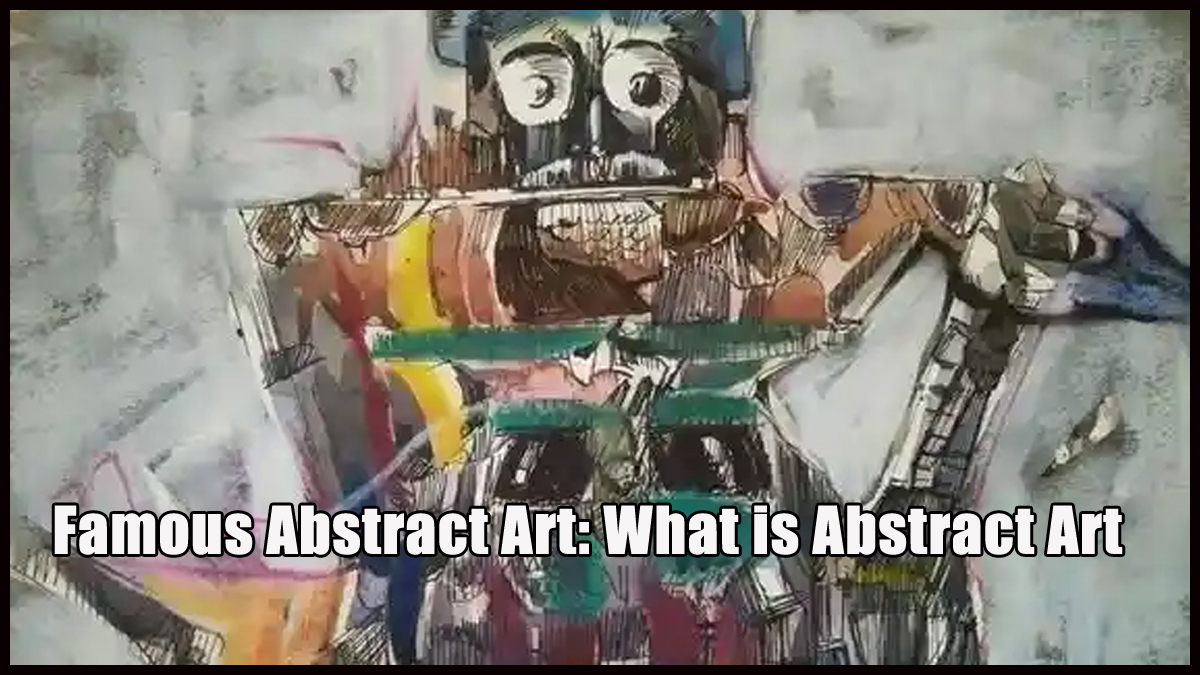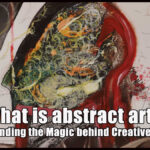Famous Abstract Art: What is Abstract Art – Definition
Recognizable Abstract Forms and Techniques
One powerful method in abstract art is maintaining geometrical positioning of shapes. For example, placing circles and lines roughly where eyes or a nose might go can suggest a face. If we keep the relative positions of those shapes, a viewer will often “see” the face even if it looks abstract. This is exactly how some artists work: they preserve simple feature layouts so viewers subconsciously connect with the image. Artist Indranil Banerjee calls this his “Recognizable Abstractions” theory. His patent suggests using everyday shapes and human anatomy in abstract compositions to tap into our innate pattern recognition. In his words, using geometric shapes from nature or the human body “makes them relatable” and plays to our brain’s pattern-finding instincts.
Key steps in this approach include:
Geometric Layout of Features:
Arrange abstract shapes to echo real-world anatomy or familiar objects. For instance, in an abstract portrait, circles or ovals stand in for eyes and a curved form for the mouth. By aligning these shapes in normal face positions, the brain recognizes a face.
Basic Shape Recognition:
Use simple, clear shapes (triangles, circles, ovals) that hint at known forms. A triangle can imply a nose, a circle an eye. These basic forms survive even when stylized.
Relatable Imagery:
Incorporate elements from nature or everyday life. A dome might become a head; a window and door can look like eyes and mouth on a house, turning a hut into a “face”.
Consistent Element Positioning:
Keep components in expected places. Banerjee’s patent highlights that retaining “relative placements of features (such as eyes, nose, and mouth)” helps viewers mentally link the art to familiar subjects.
By blending these elements, abstract artists create “best artwork” that engages viewers. The work looks abstract but still feels anchored by hidden shapes. Each viewer can pick up these clues and form connections. In this way, abstract pieces become more meaningful art pieces: viewers feel a personal resonance by recognizing patterns inside the abstraction.
A few best artwork of Indranil Banerjee:


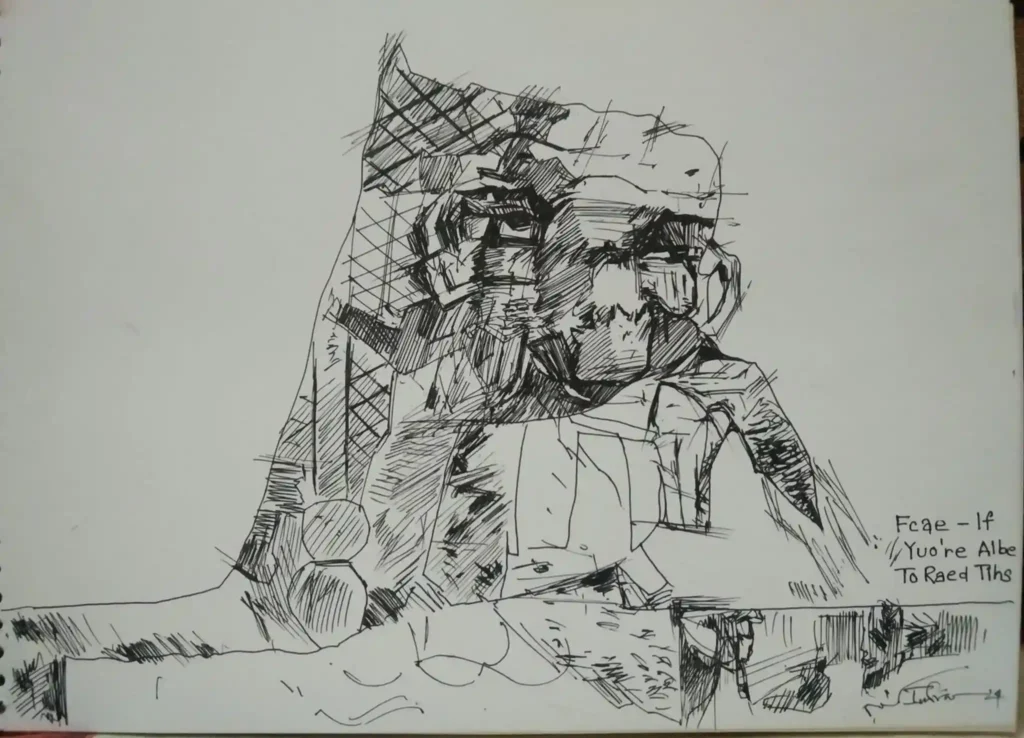
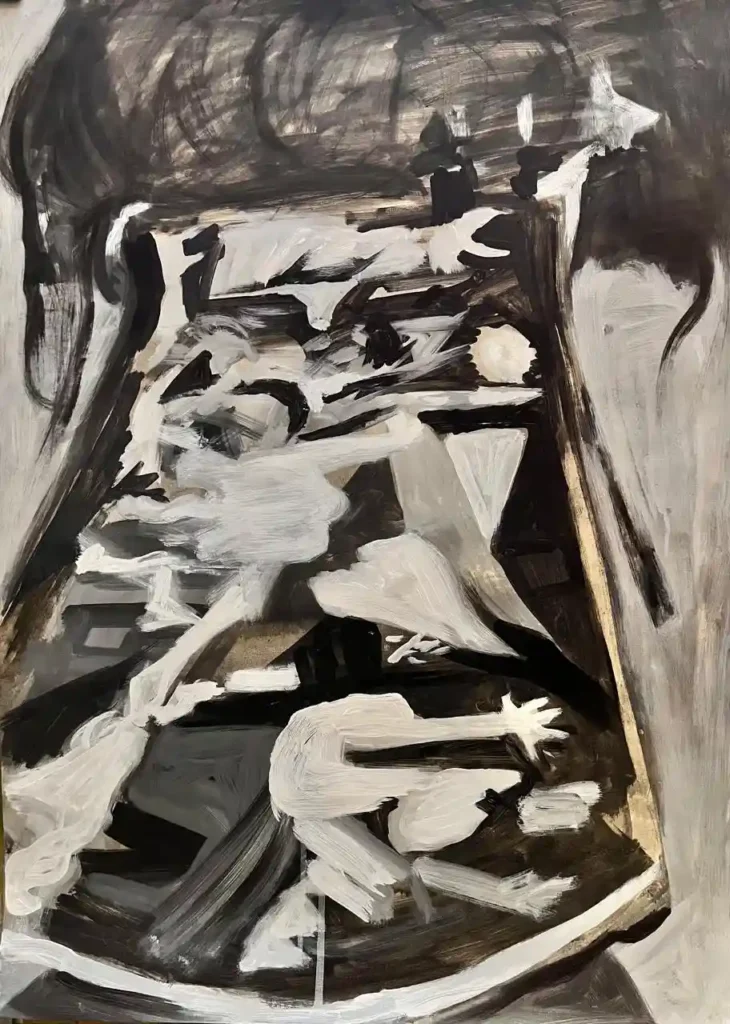
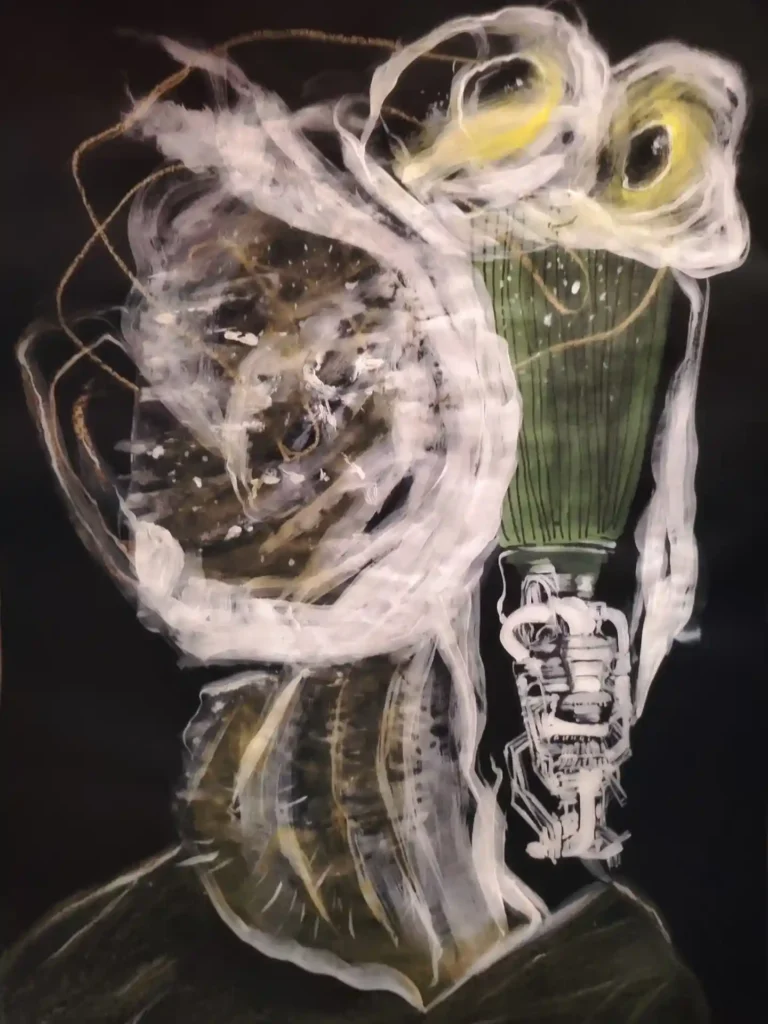
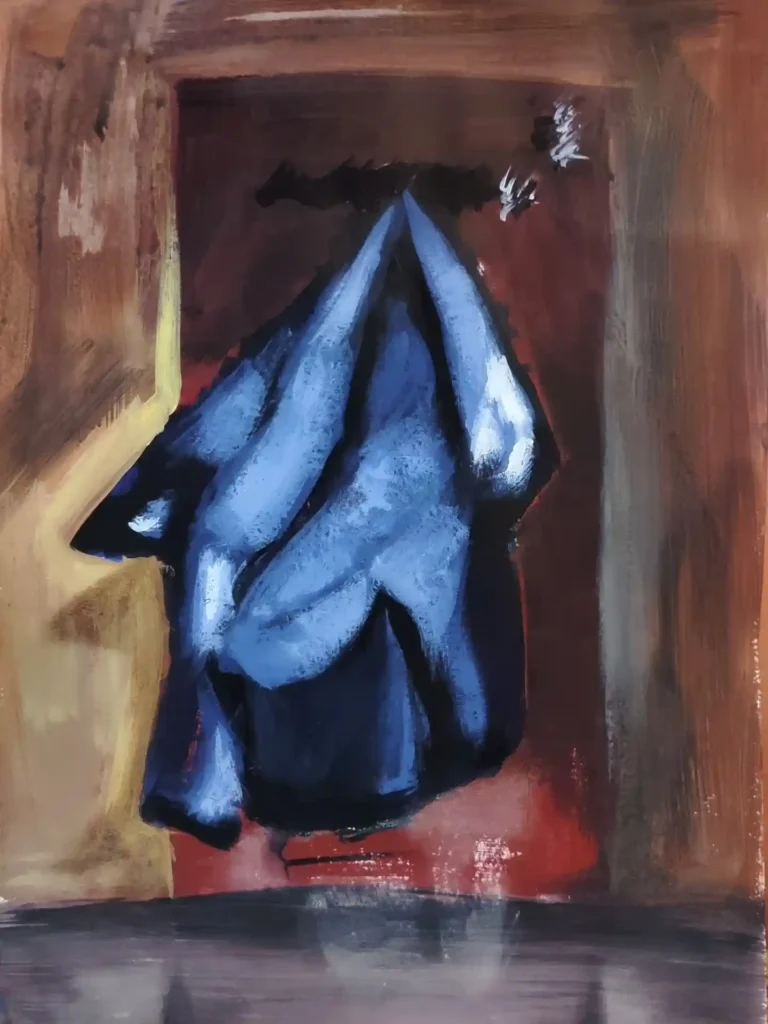
Psychology: Why We See Familiar Patterns
Our minds instinctively seek order, even in chaos. This is well documented in psychology. For example, one study notes that humans have “a natural tendency to seek patterns and meanings, even in randomness”. Gestalt laws of perception say we organize visual input into whole objects and fill gaps. For instance, the closure principle causes us to mentally complete an incomplete shape. In abstract art, these effects mean that broken lines or scattered shapes might still form a “whole” image in the viewer’s mind.
Pareidolia amplifies this effect: it’s the tendency to recognize faces or familiar forms in random stimuli. The brain evolved to spot faces quickly for social reasons. In art, even random blobs can trigger that response. A small example: people often see a face in the patterns on a wall or in tree branches. Abstract artists exploit this: they know that viewers will try to interpret their work, finding faces or animals in it. This interplay makes abstract pieces intriguing and “best artwork” candidates, since viewers enjoy the challenge of discovery.
This cognitive engagement also affects emotion. The EMP Art blog explains that abstract works invite personal interpretation because of this open-ended nature. When a viewer finds a hidden figure or shape, it can evoke memories or feelings. The art becomes a two-way communication: the artist suggests possibilities, and the viewer’s mind completes the image. As one source puts it, abstract art “engages viewers by bypassing the logical part of the brain” and lets them draw their own emotional conclusions. This psychological hook is a core reason abstract art can be so powerful and meaningful.
meaningful art pieces:
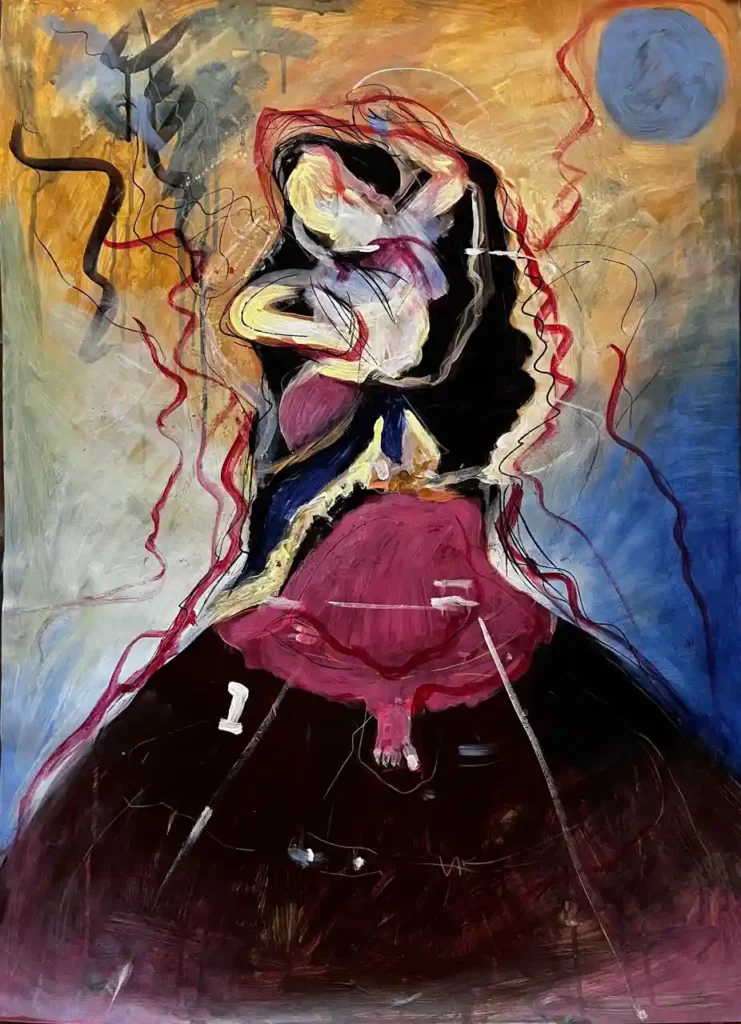


Famous Abstract Artists and Examples
Many renowned artists have mastered abstract art using shapes and patterns. Wassily Kandinsky (1866–1944) is often called a pioneer of modern abstract art. He experimented with swirling color and form to express emotion. Kandinsky’s works (like Composition VII) are full of dynamic shapes and vivid color. He believed that “abstract painting is the most difficult” and that color itself could influence the soul. Kandinsky used interplay of shapes and colors to engage the senses and spirit, exactly as his quote suggests.
Another key figure is Piet Mondrian (1872–1944), known for grid-based compositions. He started with landscapes, then moved to pure abstraction. Mondrian became “one of the pioneers of 20th-century abstract art” as he reduced his style to simple geometric elements. His famous “Composition with Red, Blue, Yellow” is a grid of straight black lines and blocks of primary color. Here, the placement of rectangles and lines feels balanced and familiar, even without any real object. Mondrian’s strict geometry and limited palette influenced many; designers even say his work “sum[s] up the High Modernist ideal”. These simple shapes in clear position give viewers a sense of harmony and meaning.
Modern abstract art by Indranil Banerjee
Abstract Expressionists like Jackson Pollock and Mark Rothko took different paths. Pollock’s famous drip paintings seem chaotic at first glance, but observers often find hidden movement and patterns within the splatters. Rothko’s large color fields can create deep mood through subtle shifts in hue. While they weren’t mentioned in Indranil Banerjee’s patent, these artists also relied on psychological effects: Pollock triggered pattern detection, and Rothko used color to stir emotion.
Beyond painters, some architects and designers draw on abstract principles. For example, many modern logos use negative space (a figure-ground trick) to imply hidden symbols. The IBM logo or Amazon’s arrow logo show the closure principle: our brain fills in missing lines to see a complete image. These examples echo how abstract art communicates meaning without explicit images.
Conclusion
By definition, abstract art moves away from realistic depiction and highlights form and color. Yet this article shows that abstract works can still be relatable. When artists use familiar shapes, consistent layouts, or natural forms in their abstract designs, viewers find “form inside form.” Even without clear figures, the brain interprets lines and colors as something recognizable. This link between geometry and emotion makes abstract pieces more than random. It can turn them into the best artwork for a viewer, full of hidden meaning.
Understanding what is abstract art helps us appreciate those hidden layers. Famous abstract art works reward patience and imagination. As the abstract art definition suggests, these works aren’t just random; they are crafted using visual language. By keeping certain shapes or patterns in place, artists ensure their creations still feel human and familiar.
In the end, we can say that it is easy to understand, “what is abstract art: – or the interaction of the painting and the mind. The most meaningful art pieces are those that strike that connection. They challenge us to interpret, recognize, and feel. From Kandinsky’s fiery compositions to Mondrian’s serene grids, famous abstract art guides our minds to see more than what meets the eye. By recognizing patterns and shapes, we unlock the definition and magic of abstract art. These seemingly simple designs carry deep emotion and purpose – making abstract art both profound and accessible to everyone.

